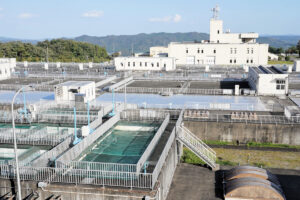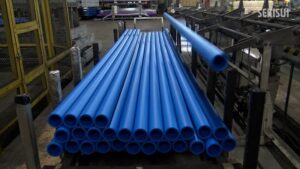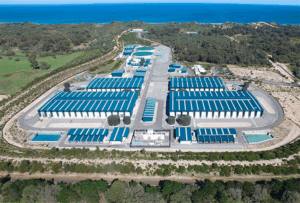Reverse osmosis (RO) membranes are the key technology behind seawater desalination, delivering safe drinking water to people around the world. But their applications extend far beyond public water supply systems. From household water purifiers and emergency shower units to cutting-edge medical and industrial uses, RO technology is supporting our lives in more ways than we realize. However, it sometimes presents challenges—most notably, the cost of membrane replacement.
This article explores five key fields outside of public water utilities where RO membranes are actively used.

Introduction: High-Performance RO Membranes, Closer Than You Think
RO membranes are ultra-fine filters with a pore size of just 0.0001 μm, allowing only water molecules to pass through while removing viruses, bacteria, heavy metals, and even radioactive substances. Thanks to this advanced separation technology, the once-distant dream of turning seawater into freshwater is now a reality—one that is increasingly integrated into our daily lives.
However, this exceptional performance comes with the challenge of maintaining and replacing the filters. RO membranes are often regarded as the “final line of defense,” but enjoying their benefits requires proper maintenance.
The Rise of Compact RO Units at Home: Achieving TDS ≈ 0ppm
Recently, compact RO water purifiers for home use have rapidly gained popularity. These systems purify tap water to a high degree of purity, with the ability to reduce TDS (total dissolved solids) to nearly 0 ppm. They are particularly favored by those concerned about chlorine or chemical odors in tap water, or those who simply want safer drinking water.
Desktop units can produce about 2 liters of purified water per minute. Cartridge replacements are typically required every 18 months and cost around ¥12,000. However, one drawback is the wastewater generated—about 1 to 2 times the amount of clean water produced (a 1:2–1:3 ratio). This is because the system must flush out concentrated impurities to yield pure water.
In Healthcare: A Lifeline for Dialysis and Injectable Water
In medical settings, RO membranes serve as a vital lifeline. In kidney dialysis, for example, ultra-pure water filtered through RO membranes is essential for cleaning patients’ blood.
Because dialysis water enters the body directly, it must meet strict standards for bacteria, endotoxins, and ions. JIS standards limit bacterial count to 100 CFU/mL or less. After RO filtration, additional UV sterilization ensures these rigorous standards are met.
RO membranes are also used in the production of water for injection (WFI), which is used in injectable medications. This minimizes impurities to protect drug quality and patient safety.
In Industry: Semiconductors and Beverage Production
RO membranes also play an indispensable role in the manufacturing of everyday products.
- Semiconductor manufacturing: Even trace impurities at the nano-level can affect yield and performance. RO membranes are essential in producing ultrapure water (18 MΩ·cm) for wafer cleaning and other processes.
- Beverage production: In the production of soft drinks, beer, sake, and more, RO membranes are used to control components like calcium that affect taste. This ensures consistent product quality and flavor for consumers worldwide.
Disaster Relief and Outdoor Use: RO Membranes in the Field
RO membranes truly shine in times of disaster or in off-grid environments where electricity and running water are unavailable.
- Portable RO purifiers: In disaster zones and remote areas, portable RO purifiers can convert large amounts of untreated water—such as from rivers, ponds, or rain—into safe drinking water. For instance, hand-pump models can produce about 30 liters per minute, and one filter can process up to 9 kilograms of water, making them a valuable resource during emergencies.
- Recirculating showers: In disaster-stricken areas and campsites, systems known as “recirculating showers” purify used water with RO membranes for reuse. With just 100 liters of water, dozens of people can take showers using the purified supply. However, because the source water is usually more contaminated than in other scenarios, the frequency of filter replacement tends to be much higher—something many people are unaware of.
Behind the High Performance: Membrane Replacement and Cost Structure
Due to their exceptional performance, RO membranes require proper maintenance—especially timely replacement—to function effectively.
Typical Lifespan
- Home cartridges: Typically last between 18 to 24 months.
- Industrial RO membranes: Roughly 8,000 operating hours, depending on usage conditions.
Replacement Costs
- Home use: Cartridge replacements cost around ¥8,000 annually.
- Industrial use: Each 8-inch membrane costs about ¥60,000, and dozens may be required.
Three Key Factors That Affect Lifespan
The lifespan of RO membranes is primarily influenced by the following three factors:
- Raw Water SDI (Silt Density Index): This measures suspended particles in raw water. Higher SDI values lead to faster membrane clogging.
- Pre-filter Management: The condition of pre-filters placed upstream of RO membranes is critical. If pre-filters clog, they increase the burden on RO membranes.
- Routine Chemical Cleaning: Regular chemical cleaning to remove contaminants from the membrane is also essential to extending membrane life.
Tips for Smarter RO Use with Supporting Technologies
To maximize the performance and cost-efficiency of RO membranes, combining them with complementary technologies is key.
- UF Pre-treatment to Double the Lifespan: Installing an ultrafiltration (UF) membrane before the RO membrane significantly reduces its load and can double its service life. However, this also incurs additional costs for the UF unit, replacement membranes, and electricity.
- Activated Carbon for Better Taste: Since RO water is nearly pure, it may lack flavor. An activated carbon filter can enhance the taste, making the water more pleasant to drink.
- Energy Recovery Systems: In large-scale applications, installing Energy Recovery Devices (ERDs) can significantly cut electricity consumption and reduce operational costs.
RO Costs and the Waste Problem
Industries that rely on RO water treatment have matured over time, developing optimized operating methods and equipment configurations to reduce running costs.
Thanks to its ease of installation—just connect a pressurized cartridge to piping—RO membrane technology is frequently adopted by new companies and across emerging industries.
While it’s encouraging to see efforts across various sectors to improve society and everyday life, we must also address the hidden issues: the rising cost of frequent membrane replacement and the mounting volume of membrane waste in these new applications.
Conclusion
RO membrane technology is more than just a tool for desalinating seawater—it’s a “last line of defense” supporting our lives across homes, healthcare, industries, and disaster relief. Yet to maintain its high performance, proper maintenance—especially membrane replacement—is absolutely essential.
In our upcoming series, we’ll delve deeper into “The Future of Japan’s Water Infrastructure.” Stay tuned!
> If you enjoyed this article, please follow and share!







